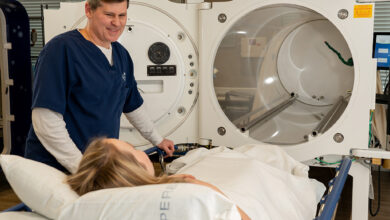The Role of Recycling in Medical Waste Management
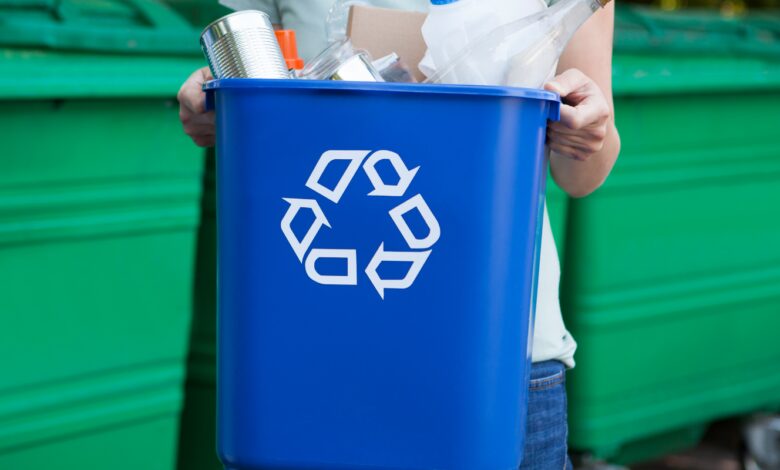
Medical waste management is a crucial aspect of public health, focusing on reducing the likelihood of individuals coming into contact with hazardous substances. One important way to pursue this goal is through the safe disposal of medical waste. While there are many methods and strategies to ensure that medical waste is disposed of properly, one renewable option is recycling.
The Benefits of Recycling Medical Waste
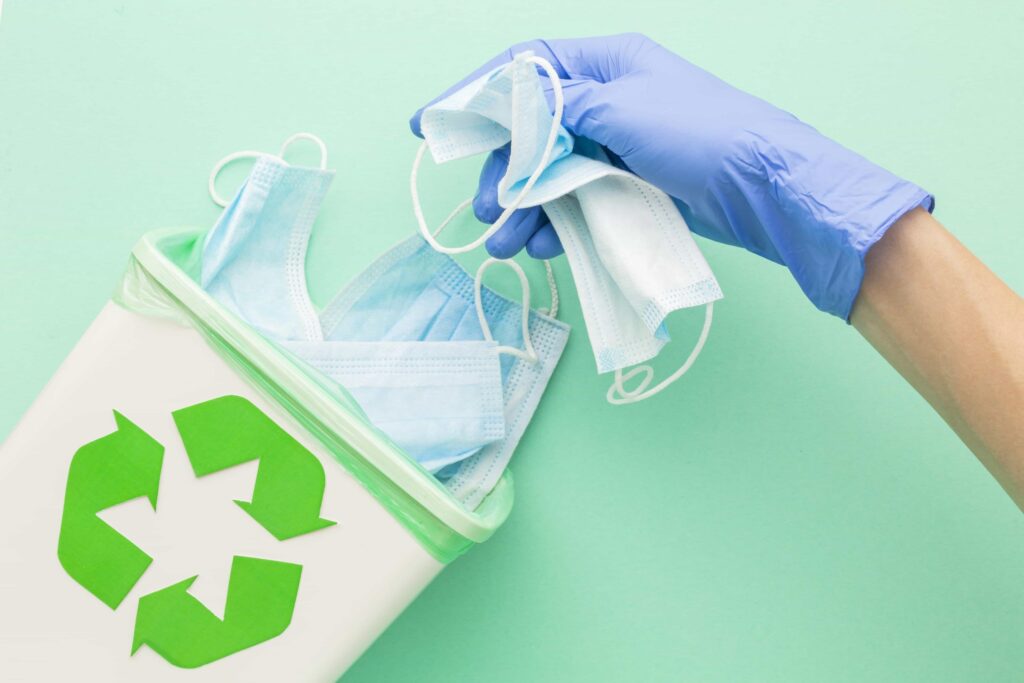
Medical waste recycling is a potential solution for diverting used materials from landfills and reducing the need for new replacement supplies. Studies conducted to evaluate the cost-effectiveness of medical trash recycling policies have shown that in many cases, substantial cost savings can be achieved.
In addition to economics, recycling medical waste also offers environmental benefits wrought by reduced carbon dioxide emissions. This is due to the lower power consumption involved as well as reduced energy costs associated with medical garbage disposal instead of treatment. Moreover, recycling, material reuse, and repurposing are enabled which reduces pollution caused by production processes and materials transportation.
Recycling medical waste also improves population health and safety by preventing the contamination of soils, groundwater, and air bloodstreams, potentially saving many lives every year. Besides reducing pollution at every stage of type-specific treatment cycles like incineration in an appropriately designed facility or biological sterilization through microorganism digestion – both methods used for hazardous materials – recycled medical products pose no risk of contamination if manufactured correctly with approved materials according to standard practice regulations and tests. This explains why different levels of national authorities have started to focus on those issues more in recent years and why is there a growing need for companies like https://www.medwastemngmt.com
Infectious Waste
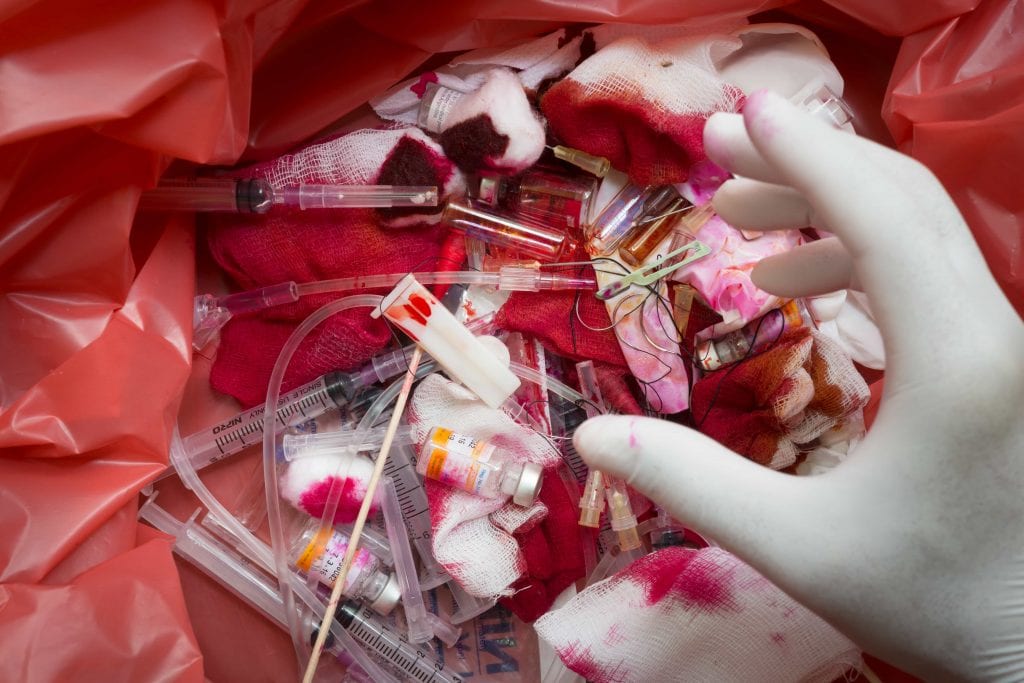
Infectious waste is a subset of the larger category of medical trash and includes any object that could potentially spread infection. This type of garbage should be handled with extreme caution as any contact with it could lead to serious infectious diseases.
Examples include:
- Sharps – needles, blades, and scalpel blades used in surgeries and other medical procedures.
- Body fluids such as blood, urine, vomit, or any other bodily secretions from patients or health care providers.
- Cultures and stocks of infectious agents used for medical purposes or research.
- Discarded material from isolation rooms or quarantine facilities.
- Specimens from operations or locations contaminated with a contagious pathogen such as MRSA (Methicillin Resistant Staphylococcus Aureus).
- Tissue samples are removed during surgery or biopsy procedures like tumor tissue and amputated limbs.
- Animal serum taken for research purposes.
- Biological materials used in laboratory tests and experiments that may contaminate specimens being handled nearby such as Petri dishes filled with microorganisms used to test drug safety and efficacy.
Pathological Waste
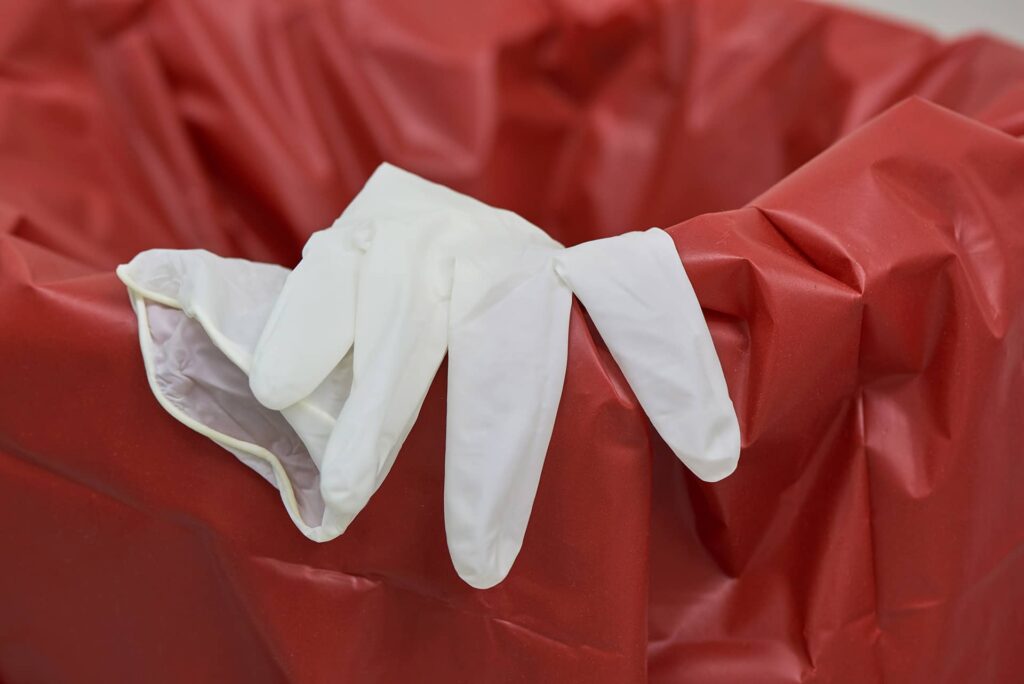
Pathological waste is generated as a result of medical diagnosis, research, or treatment of human or animal subjects. These wastes may contain both biohazardous and non-biohazardous materials, such as swabs and other disposables. Any material that contains information about a patient’s identity must be handled with extreme caution in accordance with HIPAA regulations.
Examples of pathological trash include specimens, organs, tissues removed during surgery, products of conception (such as placenta or umbilical cords), body parts (often amputated limbs or digits), and prescribed drugs. Pathological waste should always be placed in appropriate containers labeled “medical waste” or “pathological waste” along with any necessary infectious disease warning labels according to specified regulations.
Pharmaceutical Waste
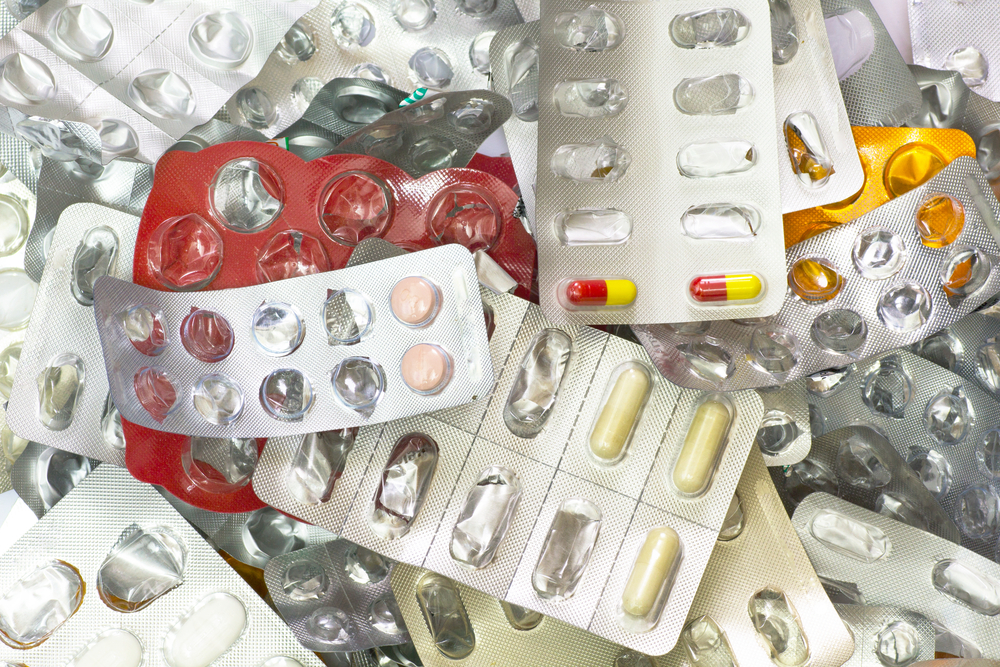
Pharmaceutical waste includes expired, unused, and potentially hazardous medications that have to be disposed of in an appropriate manner. According to the US Food and Drug Administration (FDA) guidelines, these materials should be handled using absolute precautionary measures, as some pharmaceutical drugs can have a long-term impact on the environment if not disposed of safely.
The most common methods used for disposing of pharmaceutical waste are:
- Incineration
- Heat sterilization
- Chemical sterilization
- Autoclaving
- Microwaving/Destruction Devices
Radioactive Waste
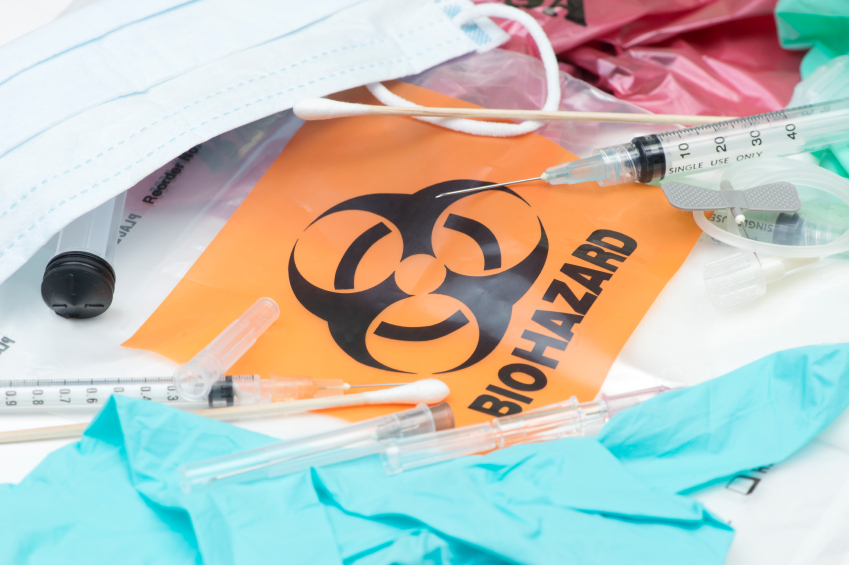
Radioactive medical waste is hazardous medical trash that contains radioactive material. It requires special handling to ensure that it does not pose a threat to human health or the environment. Radioactive items include materials used in nuclear medicine, radiation therapy, and radiography. Examples of commonly generated radioactive waste are vials, needles, and syringes contaminated with radioactive material. Additionally, disposal methods for this type of waste vary depending on its activity level: low-level versus intermediate-level versus high-level waste.
The Role of Technology
Steam autoclaving is one of the most common methods for treating medical waste, primarily due to its effectiveness in killing dangerous pathogens that can occur in human waste products. This method works by subjecting items placed inside an autoclave chamber to pressurized steam temperatures ranging from 135°C up to 270°C. By doing so, all bacteria present in these items will be killed, making them safe for further handling or disposal into landfills or through incineration.
Compactors are another type of machine often used to reduce the volume of solid material garbage before it is discarded, allowing it to fit inside considerably smaller containers than what would be necessary had it not been compacted first. High-load compactors consist of two horizontal platens designed specifically for crushing hazardous material such as syringes and other sharp objects that may puncture plastic bags while they’re being compressed into smaller sizes—making them safer for transport and storage before they are treated or disposed of properly.
Frequent shredding is an effective way to destroy infectious material contained in plastic containers— additionally assisting with the breakdown process during biodegradation by breaking down plastics further while also reducing their harmful toxins and increasing surface area contact with microbial activity within compost piles or landfills if they must be disposed of as such.
Cryogenic grinding technology utilizes liquified gases such as nitrogen for cooling contaminated materials prior to being shredded—enhancing safety measures by hardening materials before shredding them into small pieces which can then be recycled or safely disposed into a landfill without posing any serious risks or threats toward human health or the environment around us.
Conclusion

While recycling and reuse may be the most convenient option to manage medical waste properly, they must be combined with other measures like proper storage, treatment, and disposal to ensure safe healthcare management.
